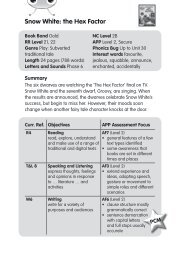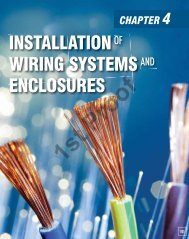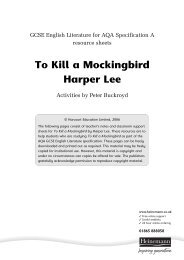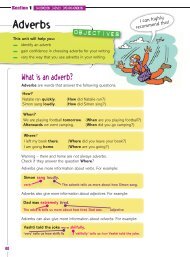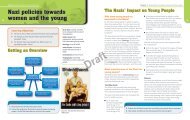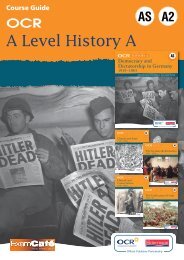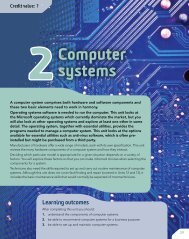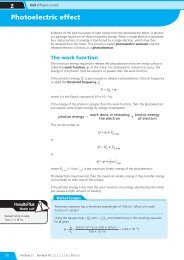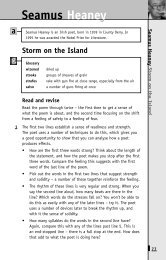Chapter 6 - Level 2 NVQ and Technical ... - Pearson Schools
Chapter 6 - Level 2 NVQ and Technical ... - Pearson Schools
Chapter 6 - Level 2 NVQ and Technical ... - Pearson Schools
Create successful ePaper yourself
Turn your PDF publications into a flip-book with our unique Google optimized e-Paper software.
FAQ<br />
Q What’s the difference between an mcb <strong>and</strong> an RCD?<br />
A An mcb is an overcurrent protective device. Like a fuse, it is designed to<br />
disconnect the circuit if the current flowing is excessive. An RCD measures the<br />
current flowing in the phase <strong>and</strong> neutral conductors, <strong>and</strong> will trip out if the<br />
difference between them (the residual current) exceeds the rated value.<br />
Q Why do I have to put coloured sleeving on switch wires <strong>and</strong> ‘strappers’.<br />
A Many accidents have occurred as a result of ‘mistaken identity’ of conductors,<br />
so marking them is essential. It is even more important since the 2004–2006<br />
colour coding changes. It is possible to have a blue conductor that could be an<br />
old phase conductor or a new neutral. Similarly, black conductors could be old<br />
neutrals or new phases. Extreme caution is necessary!<br />
Q Can I spur off the immersion heater circuit to supply the central<br />
heating system?<br />
A No. Immersion heaters supplying vessels containing more than 15 litres of water<br />
must be permanently connected to their own separate circuit.<br />
Q Why is a spur off a ring circuit called a ‘non-fused spur’?<br />
A Because a spur connected in this way breaks one of the ‘golden rules’ of circuit<br />
design, i.e. the fuse size (30/32 A) should always be smaller than the conductor<br />
current carrying capacity (27 A for 2.5mm 2 , clipped direct), which it isn’t!<br />
Therefore it is called unfused because the circuit fuse is too big to protect the<br />
spur cable.<br />
Q What protects a non-fused spur cable from overload, then?<br />
A Well, in a sense the spur cable is protected by the maximum load that can be<br />
connected to it. This 2 x 13 A socket outlets or 26 A, drawn through a 27 A cable.<br />
Now you see why ‘spurs off spurs’ are not allowed as, with two twin socket outlets,<br />
you could have 4 x 13 A – in other words 52 A flowing through a 27 A cable!<br />
Q Why do properties have more than one ring circuit even though the floor<br />
area is less than 100m?<br />
A Remember that the unlimited number of socket outlets per A1 ring circuit rule<br />
is always subject to loading. With the number of appliances increasing all the<br />
time, it would be very easy to overload a single ring circuit. Also the Regulations<br />
tell us to divide the circuits up to ‘minimise inconvenience in the event of a fault’<br />
so it is not a good idea to have all outlets on one circuit. This is especially true of<br />
lighting circuits where loss of one circuit should not result in the loss of lighting<br />
on that floor of a building.<br />
<strong>Chapter</strong> 6 Basic electrical circuitry <strong>and</strong> applications<br />
149



